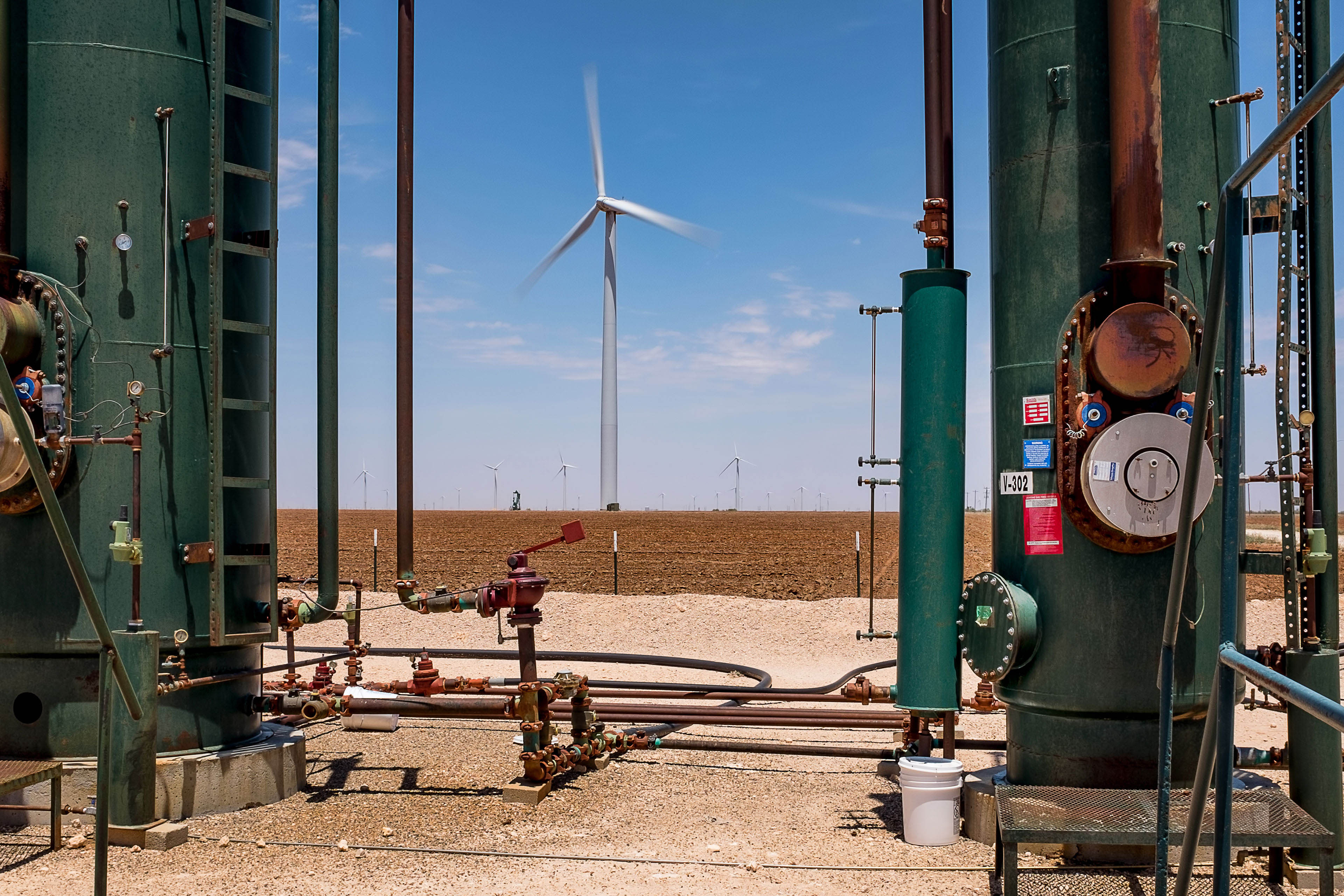EY refers to the global organization, and may refer to one or more, of the member firms of Ernst & Young Global Limited, each of which is a separate legal entity. Ernst & Young Global Limited, a UK company limited by guarantee, does not provide services to clients.

The pressure to reduce emissions is the latest challenge for an industry that thrives on innovating to overcome obstacles.
In brief
- Companies that embrace decarbonization as a catalyst to innovation will be positioned to capture opportunities, leading to long-term competitive advantage.
- Developing a mindset that prioritizes reduced emissions in every aspect of the business to deliver additional value to end users is critical.
- Oil and gas companies should consider repositioning themselves from purely commodity sellers to providers of differentiated energy products and services.
For decades, the oil and gas industry has innovated in incredible ways to find and produce the energy resources the world needs. Today, expectations around environmental, social and governance (ESG) issues — especially decarbonization — create a new call to action for the industry to reinvent itself once again to meet growing energy demands while reducing emissions.
How oil and gas companies view shifting environmental expectations — and how they respond to regulatory requirements like the forthcoming SEC rules on climate disclosure — will have a major impact on their success in the decades to come. Many oil and gas companies continue to view ESG as a compliance issue and are waiting until specific governmental regulations are implemented to make changes. Others just want to signal a willingness to “get along” by implementing minimal green initiatives without transforming their business approach.
It’s our view that a third grouping of companies, those that embrace decarbonization as a catalyst to innovation, will be positioned to capture new markets and opportunities leading to long-term competitive advantage. These companies will envision opportunity in a lower carbon world. They will utilize new and evolving technologies to not only optimize their existing businesses and comply with stakeholder requirements but also to develop new ways of doing business.
So, how can oil and gas companies drive innovation from an increased focus on environmental performance? Developing a mindset that prioritizes reduced emissions in every aspect of the business — upstream, midstream and downstream — to deliver additional value to end users is critical. To do so, companies should scrutinize two key questions: First, how can digital technology and data act as a company-wide driver of, and ROI generator for, sustainability initiatives? Second, how can existing or future products and customers interact in new or different ways based on environmental shifts?

Chapter 1
Digital and data as a propeller and ROI generator
Two steps companies can take to supercharge sustainability by leveraging digital and data
Most oil and gas companies have begun implementing digital technology, but deployment has been limited, used mostly to solve siloed problems or to benefit specific business units, rather than to scale across the enterprise. A recent survey — the EY-Parthenon Digital Investment Index — bears this out. The survey, which included 1,500 interviews with C-level executives from large companies across more than 30 countries and eight industries, found that energy companies lag other sectors in acknowledging the importance of digital to their success and scaling the digital investments they make.
Energy companies also lack a sense of urgency in reimagining their operations to hedge against disruption, which is surprising given the pending impact of environmental issues. For example, only 62% of oil and gas executives agreed with the statement “Organizations must radically transform their operations over the next two years to succeed in my industry,” compared with 77% of those in advanced manufacturing and 75% of those in health care and technology, media and telecommunications.
What that means is while companies in other industries are using technology to transform how they do business and deliver for customers, oil and gas is still in the nascent stage of digital, focusing on sensors for preventive maintenance, for example, or wearable devices to protect worker health.
“Because the fundamental product of the oil and gas industry isn’t changing, there isn’t the same pressure to transform the business model as there is in other industries that are undergoing significant disruption,” said Ben Williams, EY Americas Oil & Gas Technology Consulting Leader. “But there are still changing expectations, especially among investors and regulators, and smart companies will recognize the value of innovating to reduce emissions today while preparing for a lower-carbon future.”
At the same time, the industry’s reputation is a leading cause of talent drain, and finding skilled workers is a significant challenge — putting additional pressure on companies to speed the adoption of digital technology and focus on expanding outreach via diversity and inclusion efforts.
Smart companies will recognize the value of innovating to reduce emissions today while preparing for a lower-carbon future.
Ben Williams
EY Global and US Industrials and Energy Consulting Leader; EY US Chemicals, Oil and Gas Consulting Leader
To supercharge sustainability by leveraging the full potential of digital and data, companies should:
1. Develop a new hierarchy to manage digital innovation. Companies must move beyond siloed “problem solving” and develop more strategic investments that can transform the business model for maximum impact. According to oil and gas executives in our Digital Investment Index, the primary challenges to achieving significant returns on digital investments are the lack of alignment among organizational units and operating models that don’t support rapid decision-making and change. Further, 65% said budget issues are the main reason their digital programs are stalling. A cultural shift and visionary executive leadership are mandatory to enable the success of more strategic investments that can create maximum impact.
2. Rethink access and use of digital data. One of the obstacles for greater digital innovation has been a reluctance on the part of oil and gas companies to share information with third-party technology providers, for fear of loss of control or having to pay those firms to access their own data. But without experienced partners on the technology side, developing and managing complex data systems is a challenge. Building a more agile data marketplace, with recognized standards across the industry, could go a long way toward enabling next-level innovations.
Internal data sharing has been problematic as well. With fragmented organizational units and operating models, capturing the full emissions impact of a product has proven elusive for many oil and gas companies. However, effectively leveraging data through modern enterprise-wide technology platforms would enable companies to capture emissions data at every stage of production, transportation and processing.

Chapter 2
Product and customer growth opportunities
Two steps companies can take to enhance the customer’s experience and improve profits
To create new value pools in a lower-carbon world, oil and gas companies need to reposition themselves from being purely commodity sellers to providers of differentiated energy products and services. This will require a shift from a business-to-business mindset to a customer-centric one.
Increasingly, these customers are prioritizing a transition to a lower-carbon world as well. For example, according to a recent survey of 525 cross-industry supply chain leaders, 8 in 10 supply chain executives are increasing their efforts toward sustainable supply chain operations. Specifically, they are working toward efficient use of natural resources, decarbonization, ethical sourcing and fair trade, as part of their larger focus on ESG matters.
With a better understanding of customers like these, oil and gas companies will not only enhance their experience but also improve profits by unlocking new revenue streams. To do so, companies should:
1. Explore services that align to their strengths. Once oil and gas companies understand their customers (and their customers’ customers), they can couple that knowledge with their experience around energy, emissions, capital and more to help those companies reduce their own emissions and transition to a smaller carbon footprint. Oil and gas companies are uniquely positioned to sell services to energy customers around emissions tracking, decision-making on their carbon footprint, sustainability in their supply chain and more — a market that they are currently ceding to technology companies and even large retailers.
2. Consider new products, revenue generators. Carbon exists both as a stand-alone product and an attribute for a company’s existing products. Once oil and gas companies have an enterprise view of the emission impact of their product, they could rethink their product portfolios. For example, could oil and gas companies create branded fuels that are lower in total emissions than their competitors? The development of lower-carbon fuels, in terms of both their production and their usage, could be a major market in the future.
The development of a low-carbon fuels market means that oil and gas operators will need to learn how to offset their products’ carbon footprint, either through trading or via carbon-reducing operations such as carbon capture and sequestration.
Summary
These are just a handful of ways that oil and gas companies can use ESG expectations as a springboard to meaningful sustainability improvements and long-term enhancements to their value proposition. Companies are limited only by their ingenuity and their willingness to think differently.
How EY can help
-
Discover how EY's digital transformation teams can help your business evolve quickly to seize opportunities and mitigate risks. Find out more.
Read more -
Supporting organizations with physical and transition risks associated with climate change, and assisting them with market and regulatory changes.
Read more
Related articles
How oil and gas can leverage past lessons for future resilience
Meeting short-term energy demands while planning for a more sustainable future requires capital, carbon and operational resilience. Here’s how.




